What Causes the Body to Retain Water: A Comprehensive Guide
Explore the primary causes of water retention (fluid retention) in the body. Discover the symptoms, treatments, and prevention strategies for effectively managing fluid imbalances.
Understanding Water Retention: Causes and Factors
Water retention, also known as fluid retention or edema, occurs when the body is unable to effectively regulate its fluid levels. This condition can arise due to a variety of underlying factors, including issues with the circulatory system, kidneys, lymphatic system, hormonal imbalances, and other bodily systems.
Capillary Damage and Its Role in Fluid Retention
Capillaries, the tiny blood vessels responsible for fluid balance, can sustain damage from certain medications, such as those used to treat high blood pressure. This damage can lead to changes in capillary pressure and increased leakiness, allowing fluid to enter the spaces between cells and causing swelling and water retention.
Congestive Heart Failure and Fluid Accumulation
When the heart’s pumping action becomes compromised, as in the case of congestive heart failure, it can disrupt the normal pressure within the blood vessels. This can result in fluid buildup, leading to swelling in the legs, feet, ankles, and even the lungs, potentially causing breathing difficulties and other complications.
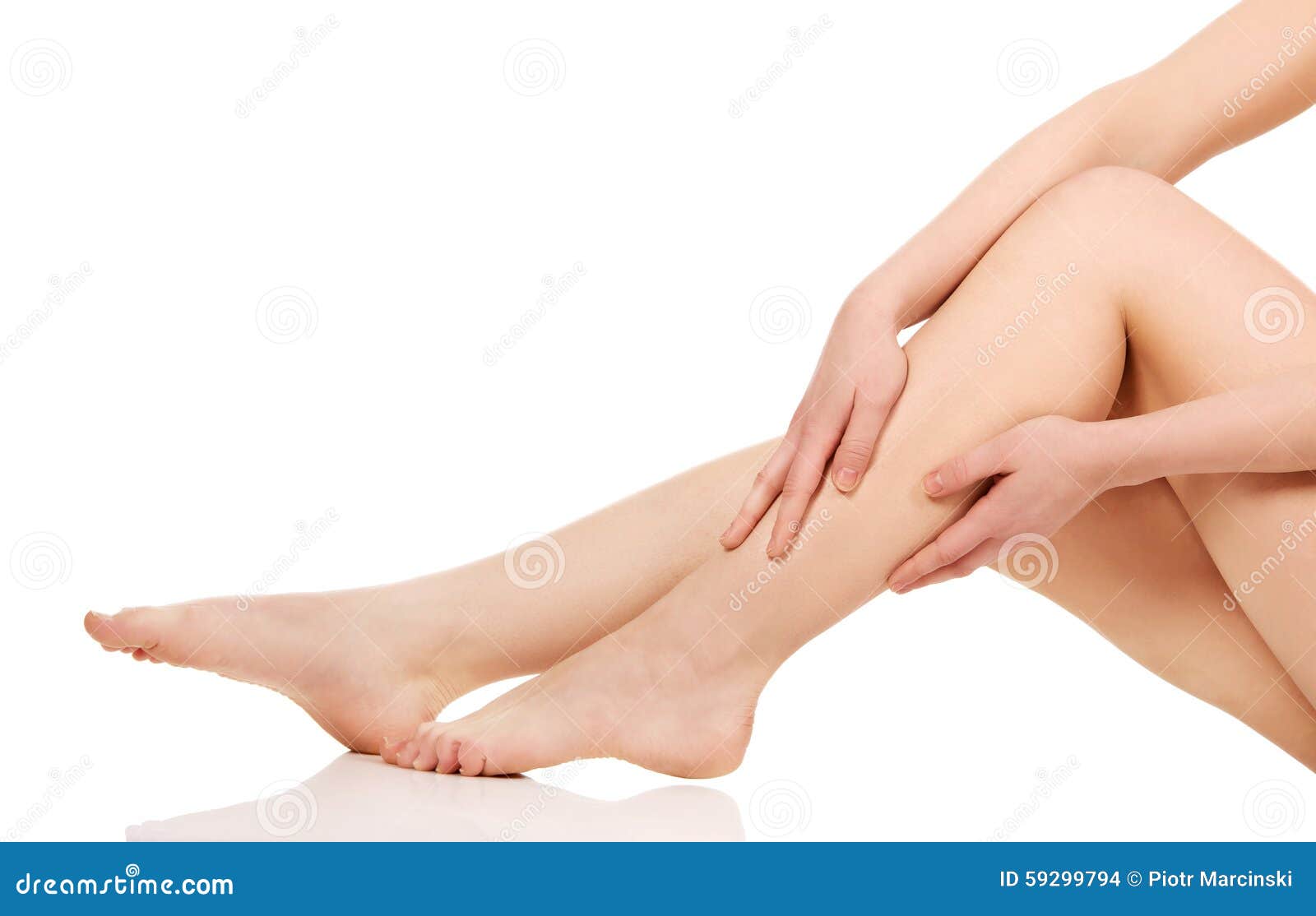
The Lymphatic System’s Impact on Fluid Balance
The lymphatic system plays a crucial role in maintaining fluid balance by delivering and reabsorbing lymphatic fluid. Disruptions to this system, such as those caused by cancer, infections, or blockages, can prevent proper fluid drainage, leading to swelling in various parts of the body.
Kidney Function and Its Role in Fluid Regulation
The kidneys are responsible for filtering the blood and removing waste, fluids, and other substances. When the kidneys do not function properly, as seen in chronic kidney disease, they cannot effectively remove excess fluids, resulting in fluid buildup and swelling, particularly in the lower limbs, hands, or face.
Fluid Retention During Pregnancy
Pregnancy often leads to increased fluid retention, especially in the lower limbs, due to hormonal changes and the additional weight carried in the abdomen. While this is a common occurrence, sudden or severe swelling may be a sign of a more serious condition, such as pre-eclampsia, which requires immediate medical attention.
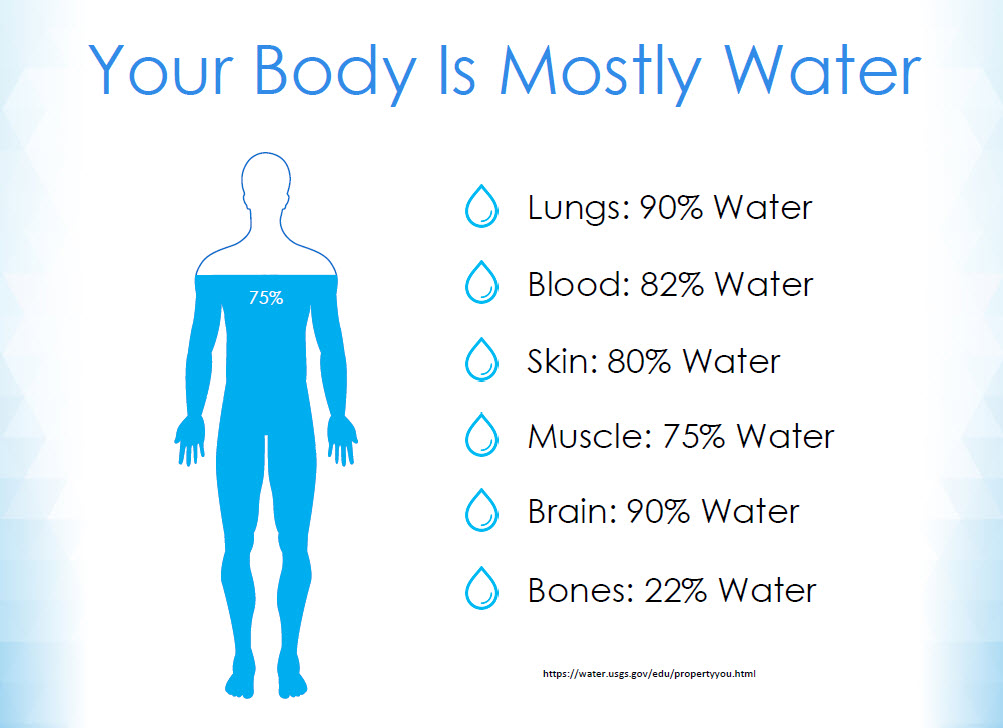
Sedentary Lifestyle and Obesity as Contributory Factors
Physical inactivity and obesity can both contribute to fluid retention. Lack of movement can weaken the calf muscle pump, leading to swelling in the lower legs, while excess weight can strain the cardiovascular and lymphatic systems, increasing the risk of fluid buildup.
In summary, water or fluid retention can arise from a complex interplay of factors, including capillary damage, congestive heart failure, lymphatic system disruptions, kidney dysfunction, pregnancy-related changes, physical inactivity, and obesity. Understanding these underlying causes is crucial for effective management and prevention of fluid imbalances.
Proper diagnosis and treatment, often involving a combination of lifestyle modifications, diuretic medications, and addressing the underlying medical conditions, can help alleviate the symptoms of water retention and maintain healthy fluid levels in the body.
Preventing and Managing Water Retention
To help prevent and manage water retention, consider the following strategies:

- Maintain a healthy lifestyle, including regular physical activity and a balanced diet low in sodium.
- Manage any underlying medical conditions, such as heart, kidney, or thyroid disorders, through proper medical treatment.
- Wear compression stockings or socks to help improve circulation and reduce swelling in the lower limbs.
- Elevate the legs and feet when possible to facilitate fluid drainage.
- Limit salt intake and stay hydrated by drinking plenty of water.
- Consult with a healthcare professional to determine the appropriate treatment plan, which may include diuretic medications or other targeted therapies.
By understanding the various causes of water retention and implementing effective prevention and management strategies, individuals can take proactive steps to maintain healthy fluid balance and reduce the discomfort and complications associated with fluid retention.
Water retention (fluid retention): Causes, symptoms, and treatments
Water or fluid retention occurs when the body is unable to maintain fluid levels. Kidney or cardiovascular disease, for instance, may cause the body to retain fluid. The main symptoms are swelling and discomfort.
The circulatory system, the kidneys, the lymphatic system, hormonal factors, and other bodily systems help maintain healthy fluid levels. If a problem arises with one or more of these systems, however, fluid retention — otherwise known as edema — can occur.
Edema can affect any area of the body. It happens for a variety of reasons.
This article will look at some causes and symptoms of water retention, as well as how to treat it.
The human body uses a complex system to regulate its water levels. Hormonal factors, the cardiovascular system, the urinary system, the liver, and the kidneys all play a role. If there is a problem with any of these parts, the body may be unable to expel fluid as it should.
Capillary damage
Capillaries are tiny blood vessels with a key role in managing fluid balance in the body. Some medications, such as those for high blood pressure, can cause damage to the capillaries.
Capillaries deliver fluid to surrounding tissues. This fluid, called interstitial fluid, supplies nutrients and oxygen to cells. After delivering the nutrients, the fluid returns to the capillaries.
If the capillaries sustain damage, edema can occur. Possible problems include changes in pressure inside the capillaries and the capillary walls becoming too leaky.
If these problems occur, too much liquid can leave the capillaries and enter the spaces between cells. If the capillaries cannot reabsorb the fluid, it will stay in the tissues, causing swelling and water retention.
Some people experience this type of edema because they have a rare condition known as systemic leaky capillary syndrome.
Congestive heart failure
The pumping action of the heart helps maintain normal pressure within the blood vessels. If a person’s heart stops working effectively, their blood pressure will change. Fluid retention can arise from this.
If a person’s heart stops working effectively, their blood pressure will change. Fluid retention can arise from this.
There may be swelling in the legs, feet, and ankles, as well as fluid in the lungs, which can result in long-term cough or breathing difficulties.
Eventually, congestive heart failure can lead to breathing problems and stress on the heart. It can therefore be life threatening.
The lymphatic system
The lymphatic system carries lymph through the body. Lymph is a fluid that contains white blood cells. It helps the immune system defend the body against infection. As the lymphatic system delivers and reabsorbs lymphatic fluid, it also helps the body maintain fluid balance.
If a problem prevents the lymphatic system from working properly, fluid can build up around the tissues. This can cause swelling in various parts of the body, including the abdomen, ankles, legs, and feet.
Cancer, infections, and blockages can all cause problems with this system.
Learn more about all forms of cancer in our dedicated hub.
The kidneys
The kidneys filter the blood and help maintain fluid levels in the body.
Waste, fluids, and other substances pass into tiny tubules in the kidneys, which act as a filter. The bloodstream reabsorbs anything the body can reuse and removes the waste in the urine.
If the kidneys do not work properly, they cannot remove waste material, including fluids and sodium. The fluid will therefore stay in the body.
People with chronic kidney disease, for example, may notice swelling in the lower limbs, hands, or face.
Pregnancy
During pregnancy, the body holds more water than usual, leading to swelling in the lower limbs — especially during hot weather or after standing for a long time.
Hormonal changes and carrying extra weight in the abdomen can also contribute. This is not usually dangerous, and it mostly resolves after delivery.
If the swelling suddenly becomes more severe, however, it may be a sign of pre-eclampsia. This is a type of high blood pressure that can harm both the mother and the fetus.
This is a type of high blood pressure that can harm both the mother and the fetus.
Anyone who experiences headaches, vomiting, pain under the ribs, vision problems, along with increased swelling during pregnancy, should seek immediate medical attention.
Physical inactivity
People with mobility problems or a sedentary lifestyle can develop edema in the lower legs. Underuse can cause the calf muscle pump to lose strength.
It may help to:
- keep the feet raised
- wear compression stockings
- practice exercises, such as raising and lowering the feet or rotating the ankles
Obesity
People with obesity may experience swelling due to the extra weight they carry. Obesity also increases the risk of high blood pressure, kidney disease, and heart disease, all of which can result in edema.
Obesity also increases the risk of metabolic syndrome, which includes type 2 diabetes, high blood pressure, and other health issues.
Malnutrition
Albumin is a protein that helps the human body manage fluids. When a person has a severe protein deficiency, it may be harder for the body to move interstitial fluid back into the capillaries.
When a person has a severe protein deficiency, it may be harder for the body to move interstitial fluid back into the capillaries.
When a person is severely malnourished, they may develop kwashiorkor. Symptoms include a loss of muscle mass and an enlarged abdomen. This is due to fluid retention in the bodily tissues.
What is malnutrition, and who is at risk? Learn more here.
Infections and allergies
The immune system’s role is to defend the body from disease and infection. When the immune system detects an unwanted invader, such as bacteria or an allergen, it will mount an attack. Inflammation is part of this process.
When inflammation occurs, the body releases histamine. Histamine causes the gaps between the cells of the capillary walls to widen. It does this to allow infection-fighting white blood cells to reach the site of inflammation.
However, it can also allow fluid to leak from the capillaries into the surrounding tissues. The swelling that results from this is usually short-term.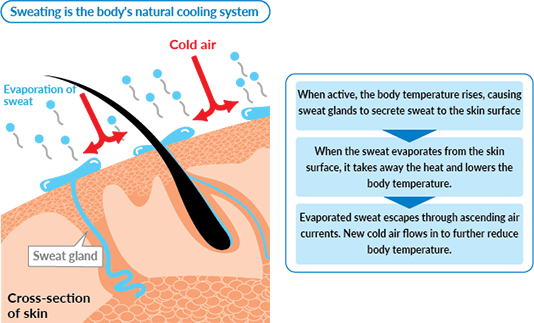
People with long-term inflammation may experience water retention.
Medications
Some medications can also lead to water retention.
These include:
- calcium channel blockers
- nonsteroidal anti-inflammatory drugs
- gabapentin
- some hormonal therapies, including some birth control pills
- prednisone, which is a corticosteroid
- some diabetes medications
Anyone concerned about swelling while using medication should speak to their doctor. They may be able to change the dosage or suggest an alternative.
Edema can develop when a person uses birth control pills. What other adverse effects can arise? Find out here.
Hormonal conditions
A hormonal imbalance can lead to fluid retention in the following ways:
- Menstruation: Changes in hormonal balance can result in fluid buildup before menstruation. A person may experience bloating and breast tenderness as a result.
- Thyroid problems: The thyroid gland releases hormones that play a role in managing fluid levels.
 People with conditions that affect the thyroid gland may therefore experience water retention.
People with conditions that affect the thyroid gland may therefore experience water retention. - Cushing’s syndrome: This condition causes the adrenal gland to produce too much steroid hormone, leading to leg swelling.
Dependent edema occurs when fluid pools in the lower part of the body. Learn more here.
The symptoms of fluid retention will depend on the area it affects. Common areas include the lower legs, the hands, the abdomen, and the chest.
In the limbs, feet, and hands, symptoms include:
- swelling
- changes in skin color
- shiny or puffy skin
- areas of skin that remain indented when pushed in with a finger, known as pitting edema
- aches and tenderness in the limbs
- stiffness in the joints
- weight gain
Fluid retention can also affect the following areas:
The brain
Fluid retention in the brain is known as cerebral edema. This can cause symptoms including vomiting, blurred vision, headache, and difficulty with balance.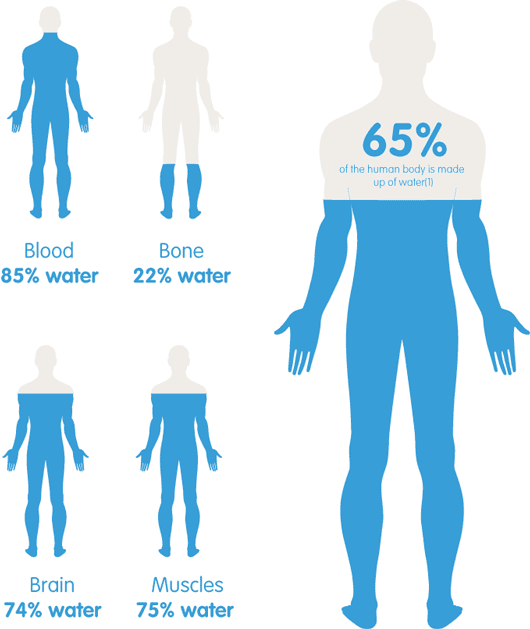 This can be life threatening.
This can be life threatening.
The lungs
Excess fluid in the lungs, or pulmonary edema, can indicate a serious problem with the heart or respiratory system. Symptoms include difficulty breathing, a cough, chest pain, and weakness, which can affect the lungs’ ability to supply oxygen to the body.
Many cases of edema will resolve without treatment. If there is an underlying condition, a doctor will focus on treating that.
Diuretics are one treatment option. They can help the kidneys remove fluid from the body. These are usually short-term options, however, as they can cause side effects such as dehydration, increased water retention, and kidney damage.
Some causes of fluid retention need medical treatment, but home remedies may help relieve the symptoms. The sections below discuss some of these in more detail.
Herbal remedies
Some herbs are natural diuretics. Some people believe that the extract of dandelion (Taraxacum officinale) may help reduce the amount of water the body retains in a day.
However, the National Center for Complementary and Integrative Health notes that as a food, dandelion is “generally considered safe,” although there is no scientific evidence to show that it has any medicinal use or that it is safe as a treatment. Some people may also have an allergy to it.
A person should speak to a doctor before using this or other herbal remedy. Diuretics may not be safe for people with low blood pressure or taking other medications that affect fluid and electrolyte balance.
Elevation
If a person has edema in their lower limbs, it may help to:
- sit with the legs raised above the heart several times each day
- sleep with the affected limb on a pillow to raise it above the level of the heart
- have a massage, in which someone strokes the affected area firmly but gently toward the heart
Clothing
People with edema may wish to wear loose clothing, as it will be more comfortable and allow fluid to circulate.
Use support stockings to increase circulation in the lower limbs.
One method of managing water retention is through dietary changes.
For example, studies show that sodium consumption can increase water retention. Limiting salt content in the diet can help to keep sodium levels in a healthful range, decreasing water retention.
Other research has found magnesium supplements can reduce many premenstrual symptoms, including water retention and bloating.
To reduce or prevent water retention, try:
- managing weight
- getting regular exercise
- wearing support stockings, if edema affects the lower limbs
- avoiding sitting or standing still for too long
- taking breaks to walk around during long journeys
- avoiding extreme temperatures, such as hot baths, showers, and saunas
Although it is not always possible to prevent fluid retention, following a healthful diet and getting plenty of exercise can help reduce the risk.
Water retention, also known as edema and fluid retention, is a buildup of fluid in the body. This can occur in cavities, tissues, and the circulatory system.
The primary symptom of water retention is swelling. Most cases of water retention resolve without medical intervention and maintaining a healthful diet and lifestyle balance can often prevent the condition.
Water retention (fluid retention): Causes, symptoms, and treatments
Water or fluid retention occurs when the body is unable to maintain fluid levels. Kidney or cardiovascular disease, for instance, may cause the body to retain fluid. The main symptoms are swelling and discomfort.
The circulatory system, the kidneys, the lymphatic system, hormonal factors, and other bodily systems help maintain healthy fluid levels. If a problem arises with one or more of these systems, however, fluid retention — otherwise known as edema — can occur.
Edema can affect any area of the body. It happens for a variety of reasons.
This article will look at some causes and symptoms of water retention, as well as how to treat it.
The human body uses a complex system to regulate its water levels. Hormonal factors, the cardiovascular system, the urinary system, the liver, and the kidneys all play a role. If there is a problem with any of these parts, the body may be unable to expel fluid as it should.
Capillary damage
Capillaries are tiny blood vessels with a key role in managing fluid balance in the body. Some medications, such as those for high blood pressure, can cause damage to the capillaries.
Capillaries deliver fluid to surrounding tissues. This fluid, called interstitial fluid, supplies nutrients and oxygen to cells. After delivering the nutrients, the fluid returns to the capillaries.
If the capillaries sustain damage, edema can occur. Possible problems include changes in pressure inside the capillaries and the capillary walls becoming too leaky.
If these problems occur, too much liquid can leave the capillaries and enter the spaces between cells. If the capillaries cannot reabsorb the fluid, it will stay in the tissues, causing swelling and water retention.
If the capillaries cannot reabsorb the fluid, it will stay in the tissues, causing swelling and water retention.
Some people experience this type of edema because they have a rare condition known as systemic leaky capillary syndrome.
Congestive heart failure
The pumping action of the heart helps maintain normal pressure within the blood vessels. If a person’s heart stops working effectively, their blood pressure will change. Fluid retention can arise from this.
There may be swelling in the legs, feet, and ankles, as well as fluid in the lungs, which can result in long-term cough or breathing difficulties.
Eventually, congestive heart failure can lead to breathing problems and stress on the heart. It can therefore be life threatening.
The lymphatic system
The lymphatic system carries lymph through the body. Lymph is a fluid that contains white blood cells. It helps the immune system defend the body against infection. As the lymphatic system delivers and reabsorbs lymphatic fluid, it also helps the body maintain fluid balance.
If a problem prevents the lymphatic system from working properly, fluid can build up around the tissues. This can cause swelling in various parts of the body, including the abdomen, ankles, legs, and feet.
Cancer, infections, and blockages can all cause problems with this system.
Learn more about all forms of cancer in our dedicated hub.
The kidneys
The kidneys filter the blood and help maintain fluid levels in the body.
Waste, fluids, and other substances pass into tiny tubules in the kidneys, which act as a filter. The bloodstream reabsorbs anything the body can reuse and removes the waste in the urine.
If the kidneys do not work properly, they cannot remove waste material, including fluids and sodium. The fluid will therefore stay in the body.
People with chronic kidney disease, for example, may notice swelling in the lower limbs, hands, or face.
Pregnancy
During pregnancy, the body holds more water than usual, leading to swelling in the lower limbs — especially during hot weather or after standing for a long time.
Hormonal changes and carrying extra weight in the abdomen can also contribute. This is not usually dangerous, and it mostly resolves after delivery.
If the swelling suddenly becomes more severe, however, it may be a sign of pre-eclampsia. This is a type of high blood pressure that can harm both the mother and the fetus.
Anyone who experiences headaches, vomiting, pain under the ribs, vision problems, along with increased swelling during pregnancy, should seek immediate medical attention.
Physical inactivity
People with mobility problems or a sedentary lifestyle can develop edema in the lower legs. Underuse can cause the calf muscle pump to lose strength.
It may help to:
- keep the feet raised
- wear compression stockings
- practice exercises, such as raising and lowering the feet or rotating the ankles
Obesity
People with obesity may experience swelling due to the extra weight they carry. Obesity also increases the risk of high blood pressure, kidney disease, and heart disease, all of which can result in edema.
Obesity also increases the risk of metabolic syndrome, which includes type 2 diabetes, high blood pressure, and other health issues.
Malnutrition
Albumin is a protein that helps the human body manage fluids. When a person has a severe protein deficiency, it may be harder for the body to move interstitial fluid back into the capillaries.
When a person is severely malnourished, they may develop kwashiorkor. Symptoms include a loss of muscle mass and an enlarged abdomen. This is due to fluid retention in the bodily tissues.
What is malnutrition, and who is at risk? Learn more here.
Infections and allergies
The immune system’s role is to defend the body from disease and infection. When the immune system detects an unwanted invader, such as bacteria or an allergen, it will mount an attack. Inflammation is part of this process.
When inflammation occurs, the body releases histamine. Histamine causes the gaps between the cells of the capillary walls to widen. It does this to allow infection-fighting white blood cells to reach the site of inflammation.
It does this to allow infection-fighting white blood cells to reach the site of inflammation.
However, it can also allow fluid to leak from the capillaries into the surrounding tissues. The swelling that results from this is usually short-term.
People with long-term inflammation may experience water retention.
Medications
Some medications can also lead to water retention.
These include:
- calcium channel blockers
- nonsteroidal anti-inflammatory drugs
- gabapentin
- some hormonal therapies, including some birth control pills
- prednisone, which is a corticosteroid
- some diabetes medications
Anyone concerned about swelling while using medication should speak to their doctor. They may be able to change the dosage or suggest an alternative.
Edema can develop when a person uses birth control pills. What other adverse effects can arise? Find out here.
Hormonal conditions
A hormonal imbalance can lead to fluid retention in the following ways:
- Menstruation: Changes in hormonal balance can result in fluid buildup before menstruation.
 A person may experience bloating and breast tenderness as a result.
A person may experience bloating and breast tenderness as a result. - Thyroid problems: The thyroid gland releases hormones that play a role in managing fluid levels. People with conditions that affect the thyroid gland may therefore experience water retention.
- Cushing’s syndrome: This condition causes the adrenal gland to produce too much steroid hormone, leading to leg swelling.
Dependent edema occurs when fluid pools in the lower part of the body. Learn more here.
The symptoms of fluid retention will depend on the area it affects. Common areas include the lower legs, the hands, the abdomen, and the chest.
In the limbs, feet, and hands, symptoms include:
- swelling
- changes in skin color
- shiny or puffy skin
- areas of skin that remain indented when pushed in with a finger, known as pitting edema
- aches and tenderness in the limbs
- stiffness in the joints
- weight gain
Fluid retention can also affect the following areas:
The brain
Fluid retention in the brain is known as cerebral edema.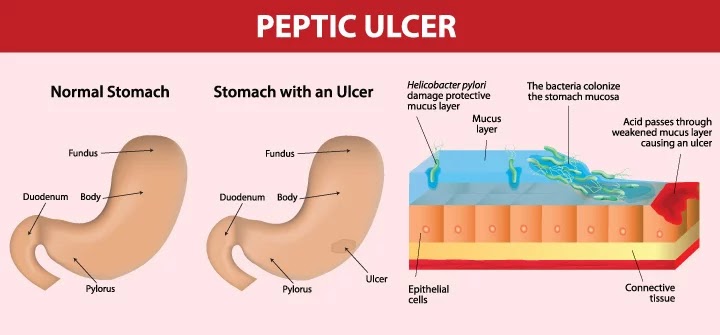 This can cause symptoms including vomiting, blurred vision, headache, and difficulty with balance. This can be life threatening.
This can cause symptoms including vomiting, blurred vision, headache, and difficulty with balance. This can be life threatening.
The lungs
Excess fluid in the lungs, or pulmonary edema, can indicate a serious problem with the heart or respiratory system. Symptoms include difficulty breathing, a cough, chest pain, and weakness, which can affect the lungs’ ability to supply oxygen to the body.
Many cases of edema will resolve without treatment. If there is an underlying condition, a doctor will focus on treating that.
Diuretics are one treatment option. They can help the kidneys remove fluid from the body. These are usually short-term options, however, as they can cause side effects such as dehydration, increased water retention, and kidney damage.
Some causes of fluid retention need medical treatment, but home remedies may help relieve the symptoms. The sections below discuss some of these in more detail.
Herbal remedies
Some herbs are natural diuretics. Some people believe that the extract of dandelion (Taraxacum officinale) may help reduce the amount of water the body retains in a day.
Some people believe that the extract of dandelion (Taraxacum officinale) may help reduce the amount of water the body retains in a day.
However, the National Center for Complementary and Integrative Health notes that as a food, dandelion is “generally considered safe,” although there is no scientific evidence to show that it has any medicinal use or that it is safe as a treatment. Some people may also have an allergy to it.
A person should speak to a doctor before using this or other herbal remedy. Diuretics may not be safe for people with low blood pressure or taking other medications that affect fluid and electrolyte balance.
Elevation
If a person has edema in their lower limbs, it may help to:
- sit with the legs raised above the heart several times each day
- sleep with the affected limb on a pillow to raise it above the level of the heart
- have a massage, in which someone strokes the affected area firmly but gently toward the heart
Clothing
People with edema may wish to wear loose clothing, as it will be more comfortable and allow fluid to circulate.
Use support stockings to increase circulation in the lower limbs.
One method of managing water retention is through dietary changes.
For example, studies show that sodium consumption can increase water retention. Limiting salt content in the diet can help to keep sodium levels in a healthful range, decreasing water retention.
Other research has found magnesium supplements can reduce many premenstrual symptoms, including water retention and bloating.
To reduce or prevent water retention, try:
- managing weight
- getting regular exercise
- wearing support stockings, if edema affects the lower limbs
- avoiding sitting or standing still for too long
- taking breaks to walk around during long journeys
- avoiding extreme temperatures, such as hot baths, showers, and saunas
Although it is not always possible to prevent fluid retention, following a healthful diet and getting plenty of exercise can help reduce the risk.
Water retention, also known as edema and fluid retention, is a buildup of fluid in the body. This can occur in cavities, tissues, and the circulatory system.
The primary symptom of water retention is swelling. Most cases of water retention resolve without medical intervention and maintaining a healthful diet and lifestyle balance can often prevent the condition.
What foods retain water in the body: a list
Contents
- Why fluid is retained in the body
- Fluid retention: symptoms
- What foods retain water in the body: a list
- How alcohol retains water in the body
- How salt retains water in the body
- Measures to prevent swelling
We are approximately 60-70% water. Organs, muscles and even bones contain water. But sometimes the body retains too much water, and then there is swelling of the feet, ankles, hands, face. Water retention is often temporary and easy to fix. However, it may be a sign of a serious illness. In particular, weight may increase, and no diet and exercise will help you lose those extra pounds.
In particular, weight may increase, and no diet and exercise will help you lose those extra pounds.
Water retention, or edema, is defined as the excessive accumulation of fluid in the circulatory system, tissues, or body cavities. In this article, we will look at what retains water in the body, the causes of edema and how to eliminate them.
Edema occurs when small blood vessels leak fluid into nearby tissues. Excess fluid accumulates and causes swelling of the surrounding tissues. Edema can have many causes: a dislocation, a bee sting, or a skin infection. By the way, in the case of an infection, the swelling helps the body to heal, because more white blood cells that fight the infection get into the swollen area.
Other reasons why fluid is retained in the body can be caused by a variety of conditions and diseases. The most common reason is too much salt in the diet. The reason may be: diseases of the heart, kidneys, liver, side effects from certain drugs, malfunction of the lymphatic system. The answer to the question: “Why is fluid retained in a woman’s body?” – there may be a menstrual cycle: some women observe the appearance of edema two weeks before menstruation.
The answer to the question: “Why is fluid retained in a woman’s body?” – there may be a menstrual cycle: some women observe the appearance of edema two weeks before menstruation.
Other common reasons:
- Prolonged standing.
- Hot weather.
- Burns, including sunburn.
- Lack of protein or vitamin B1 (thiamine) in the diet.
- Taking medicines (hypotensive) for high blood pressure, corticosteroids and non-steroidal anti-inflammatory drugs.
Chronic venous insufficiency: Weakened valves in the veins in the legs cannot effectively return blood to the heart.
Fluid retention may be accompanied by symptoms that depend on the underlying disease or disorder. For example, the clinical symptoms of fluid retention in the body associated with diseases of the cardiovascular system:
- Chest pain or pressure
- Fatigue
- Inability to move for a long time
- Shortness of breath
Other symptoms that may occur along with fluid retention include:
- Reduction of body hair, especially in areas of swelling.

- Discomfort or pain in the part of the body where the swelling occurs.
- Decreased ability to move the part of the body affected by the edema.
- Changes in the condition of the skin in areas affected by edema: thickening, loss of elasticity, etc.
- Rapid weight gain or weight fluctuations.
- When pressed, the skin can hold the dent for a few seconds.
There are more serious symptoms that may indicate a life-threatening condition:
- Labored breathing
- Inability to urinate
- Loss of consciousness
Edema is a serious health problem, so you need to understand which foods retain water in the human body. The mechanism of water retention depends on the characteristics of the digestion of these products. For example, gas, bloating, and acidity lead to water retention. Pay attention to the list of products that lead to edema. They can be eliminated from the diet or reduced in number:
- Foods rich in sodium.

Salt is one of the main causes of water retention. How salt retains water in the body has long been known, but it is not so easy to eliminate the product from the diet. Salt is present in almost everything we eat: processed and prepared foods, bread, etc. Table salt contains about 40% sodium, which the body dilutes with water, then excess fluid is retained. Given this fact, you can remove excess fluid from the body by replacing salt with spices. - Carbonated drinks and drinks with a high acid content.
In addition to soda, this list includes coffee, caffeinated drinks, fermented tea, and some fruit juices. - Cruciferous vegetables.
White cabbage, broccoli, radish, horseradish also retain water in the body of men and women. This is because they contain raffinose, a sugar that remains undigested until it is fermented by bacteria in the intestines. - Apples.
This product is an essential part of a healthy diet. However, the fruit contains fructose and sorbitol, which are difficult for some people to digest, leading to swelling.
- Starch.
Most starchy foods (potatoes, corn, pasta, wheat, etc.) are made from refined wheat flour because they are difficult to digest, produce gas, are rich in fat, and can cause water retention. - Dairy products.
In people with lactose intolerance, the body cannot digest dairy products, so they travel to the large intestine, where bacteria try to break them down. - Legumes.
These foods are rich in protein, but at the same time contain so much sugar and dietary fiber that the body can not absorb easily. - Spicy and fried foods.
The stomach takes much longer to break down fats and digest them properly. Spicy food stimulates the secretion of gastric juice and can cause acidity.
Alcohol is a toxin and the body needs water to flush out the poison. Therefore, on the one hand, the body itself retains water to help the liver cope with toxins, and on the other hand, alcohol disrupts the excretory function of the kidneys and fluid accumulates in the tissues. The situation can be aggravated by the consumption of fried, salty and spicy foods along with alcohol.
The situation can be aggravated by the consumption of fried, salty and spicy foods along with alcohol.
How long alcohol retains water in the body depends on many factors: the strength of the drinks, their quantity, accompanying food and, of course, the health of the person who consumes the alcoholic poison.
Too much salt stores extra sodium in the body, which keeps fluid out of the cells. Sodium plays a key role in the regulation of water in cells, and also contributes to the functioning of the nervous system and muscle function. The body tries to keep the ratio of sodium to water outside of the cell walls, about the same as in sea water.
When salt is consumed, the body retains water to maintain the right ratio. So, 400 mg of sodium (the amount in 1 g of table salt) causes the body to retain an additional 0.5 liters of water. We need a minimum of 180 mg of sodium per day, and ideally 1500 mg. However, modern man gets more than 3400 mg.
One way to reduce water retention is to increase your potassium intake through fruits and vegetables. These foods contain nutrients that help prevent fluid from leaking from blood vessels into tissue spaces. It is better to eat foods high in potassium rather than taking artificial supplements.
These foods contain nutrients that help prevent fluid from leaking from blood vessels into tissue spaces. It is better to eat foods high in potassium rather than taking artificial supplements.
You can reduce or eliminate unhealthy foods from your diet: canned food, processed foods, fast food, and other foods that may have hidden salt ingredients.
The problem with water retention can start when a person goes on a low-calorie diet. Typically, a low-calorie diet lacks protein, and protein is an essential nutrient for preventing abnormal changes in body tissues.
Here are some tips to help reduce water retention in the body:
- Reduce sodium intake
- Avoid processed foods
- Drink 8-12 glasses of fluid per day (water, fruit juice, milk)
- Eat more citrus fruits and green leafy vegetables
- Observe the diet: eat at the same time and do not overeat
Regular movement is required. Cycling and walking help to activate the circulation of fluid in the lower extremities. Excess fluid is not excreted in those who make long flights, sit at a table for a long time or are in a wheelchair.
Excess fluid is not excreted in those who make long flights, sit at a table for a long time or are in a wheelchair.
How to quickly remove excess fluid? Doctors may prescribe diuretics, drugs that help the body get rid of water and sodium. When using diuretics, care must be taken because of possible side effects: dizziness, dehydration, weakness. It must be remembered that edema is not a cause, but a consequence of various disorders. If the cause is not corrected, it will lead to more serious problems. Complications resulting from fluid retention vary depending on the severity and underlying cause.
Some foods have a diuretic effect. For example, adding lemon juice to water causes frequent urination and reduces water retention. Cranberry juice is another natural diuretic. You can drink one glass of cranberry juice a day to reduce water retention. Most foods high in vitamin C also have natural diuretic properties.
No matter how contradictory it may seem, but the use of large amounts of water reduces its retention in the body. Since water retention is often due to dehydration, providing the body with plenty of water will allow the body not to store water in order to prevent it.
Since water retention is often due to dehydration, providing the body with plenty of water will allow the body not to store water in order to prevent it.
It is necessary to maintain a healthy lymphatic system. It circulates lymph throughout the body and collects bacteria, viruses and cellular debris for disposal.
Proper nutrition and exercise will help to avoid serious health problems and, as a result, fluid retention. Be healthy!
What foods retain water in the body?
Our bodies are made up primarily of water. But this does not mean at all that the more water in it, the better. A sharp increase in the volume of the intercellular water space is reflected in our well-being: edema, swelling and swelling appear (for example, in the abdomen). Swelling of various parts of the body and bloating is a fairly common problem, and it can occur for the following reasons:
- the nature and mode of our diet
- sedentary lifestyle
- the presence of chronic or acute diseases (for example, obesity or varicose veins)
- smoking and alcohol
- hormonal changes (2nd half of the menstrual cycle and pregnancy)
Looking at this list, it becomes clear that almost half of the reasons for the violation of our water-salt balance are bad habits , such as malnutrition, physical inactivity, addiction to smoking or alcohol 1 , which are quite easy to eliminate. It is worth changing your lifestyle and eliminating some foods , from the diet and you will forget about situational (not chronic) swelling, bloating and other unpleasant sensations associated with hyperhydration.
It is worth changing your lifestyle and eliminating some foods , from the diet and you will forget about situational (not chronic) swelling, bloating and other unpleasant sensations associated with hyperhydration.
While many are aware of the negative effects of smoking, alcohol and physical inactivity on water retention in the body, not everyone knows how important the role of nutrition in eliminating the causes of intermittent swelling. As for chronic edema (caused by chronic diseases), its treatment is associated with the treatment of the disease itself, although even in these cases, the diet and diet cannot be completely written off.
Today we will take a closer look at situational swelling and talk about what foods should be eliminated in order to get rid of this common, even among healthy people, problem.
Contents
- Salt and all salty foods
- fried food
- Sweet
- Flour and starch products
- Beverages
- Alcohol
- Dairy
- Conclusion
Salt and all salt-containing products
Water-salt balance is simply sodium-potassium balance.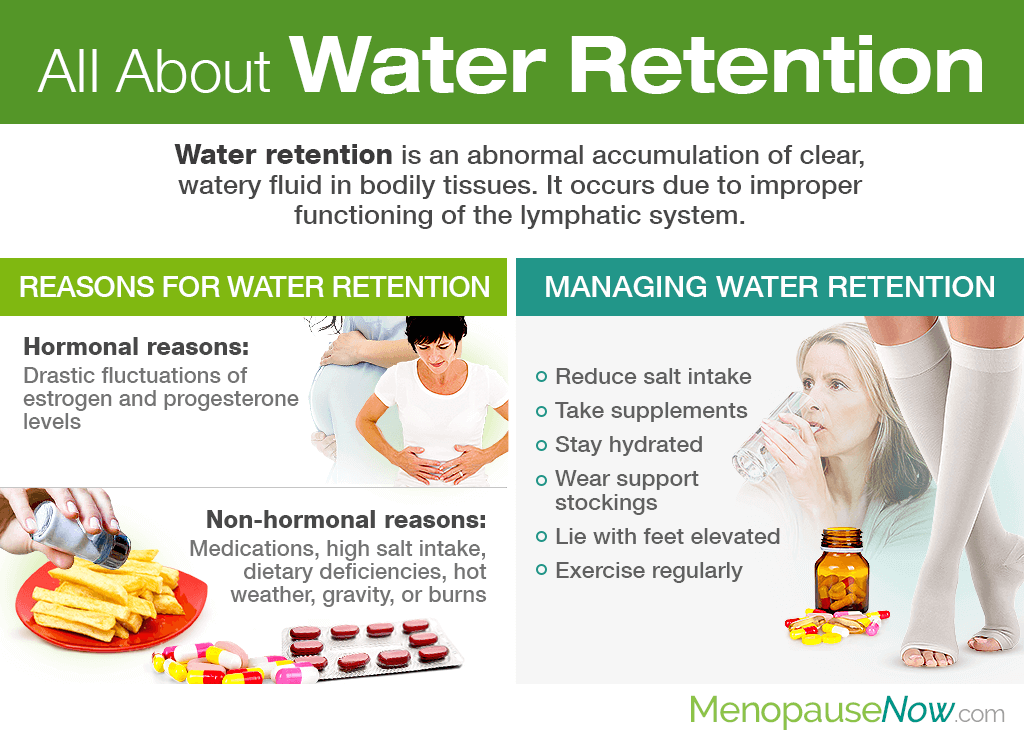 With a disturbed water-salt balance, our body experiences an excess of sodium, which causes swelling. The main source of sodium is salt (any: table, sea, pink, etc.), so you should significantly reduce the intake of salt-containing foods.
With a disturbed water-salt balance, our body experiences an excess of sodium, which causes swelling. The main source of sodium is salt (any: table, sea, pink, etc.), so you should significantly reduce the intake of salt-containing foods.
These products include not only traditional pickles and marinades, but also any smoked products (meat, fish, chicken), canned food and fast food (snacks, chips, ready-made sauces, salted nuts or crackers) 2 .
Fried foods
Fatty fried foods are poorly processed by the body and provoke fluid retention. This is not the only reason to avoid it: fried foods contain a large amount of carcinogens and toxins that damage the liver, kidneys and digestive tract and contribute to the development of serious diseases such as obesity, diabetes and cancer 3
Sweet
water retention, but its excessive consumption causes the body to increase the production of insulin, which retains fluid. Insulin makes you retain sodium, and when you retain sodium, you retain water. The only way to get rid of this water is to avoid sugary foods and drinks.
The only way to get rid of this water is to avoid sugary foods and drinks.
Sweet is not only cakes, cookies, sweets, chocolate, ice cream and halva. These are not only purchased sweet drinks, but also homemade ones that most of us love to sweeten so much: compotes, jelly, sweet tea, coffee and cocoa. Sugar is also “hidden” in fructose, fruits (there is even a rule “do not eat more than one large fruit a day”) and especially in dried fruits. And what about sweet yoghurts and other fermented milk products?
The best way out is either to completely give up sweets, or to allow yourself 1-2 times a week (once, and not throughout the day). Honey and cane or coconut sugar are no less harmful, and if you cannot be without sweets for a long time, the harmless and omnipotent natural stevia, which is now increasingly appearing in our stores, will come to the rescue 4 .
Flour and starch products
This heading could be shorter – just “starch products”, since all flour products contain starch . But, besides this, there are also starchy vegetables, so for clarity, we separated vegetables from flour. Although starch is contained in both the first and the second, it has the same effect on the body. When starch is broken down, glucose and water are formed: glucose damages blood vessels, and water leads to swelling.
But, besides this, there are also starchy vegetables, so for clarity, we separated vegetables from flour. Although starch is contained in both the first and the second, it has the same effect on the body. When starch is broken down, glucose and water are formed: glucose damages blood vessels, and water leads to swelling.
Therefore, the complete list of starchy foods (except for the sweets mentioned above) looks something like this:
- white and brown bread, crackers, pasta, spaghetti
- almost all cereals: rice, wheat, oatmeal, beloved by many
- flakes: corn and other,
- vegetables: beets, potatoes, carrots, squash, Jerusalem artichoke, swede, corn
- dry legumes (other than soybeans) and peas
- chestnuts
We are by no means asking you to give up all of the above. Avoid at least processed foods, such as cereals and ready-made cereals. Choose whole-grain options for bread, cereals, and pasta. Our stores now have black and red rice or buckwheat pasta. Limit starchy vegetables and favor water-rich vegetables like celery, cucumbers, and tomatoes.
Choose whole-grain options for bread, cereals, and pasta. Our stores now have black and red rice or buckwheat pasta. Limit starchy vegetables and favor water-rich vegetables like celery, cucumbers, and tomatoes.
Drinks
Many scientists and nutritionists have long questioned the idea that caffeine has a diuretic effect on the body. Some scientists agree that by starting to remove fluid from the body, caffeine causes the body to retain it in order to prevent possible dehydration. This applies to both traditional coffee and carbonated drinks, some of which have more caffeine than a cup of espresso. Regardless of whether they are with or without sugar.
As for sweet carbonated drinks, their name alone speaks for itself: the amount of sugar in them goes off scale. Even if such a drink does not contain caffeine, and the label proudly says “no sugar”, it is not difficult to guess what it is replaced with. However, manufacturers do not hide this, the composition of the drink includes synthetic sugar substitutes that negatively affect the body and kidneys.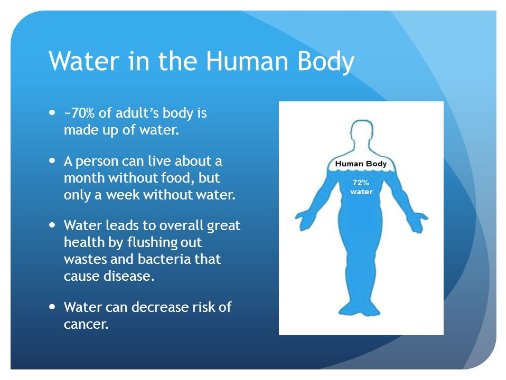
But even leaving aside caffeine, sugar or its substitutes, let’s remember how carbonated drinks are made. That’s right, with the help of sodium salts. The amount of sodium in any such bottle is comparable to a good serving of pickles or smoked meats 5 . Conclusions suggest themselves
For the same reason, carbonated mineral water is also unsafe: along with “useful” minerals, you get a fair portion of moisture-retaining sodium salts, and the result is obvious, or rather, on your face, legs or something else.
Alcohol
Even a small amount of alcohol contributes to fluid retention in the body 6 . Its action is similar to the action of caffeine: at first, alcohol (any, including beer) acts as a diuretic, and while you drink, you often run to the toilet. But the next day, the body begins to retain water, as if compensating for its loss yesterday caused by your frequent “excursions” to the toilet.
If frequent edema is your problem, try to drink alcohol (including wine) as little as possible, but don’t forget to drink more pure water on holidays (we have already mentioned the dangers of sweet juices, stakes and mineral water here)
Dairy products
Yes, milk also affects puffiness, although not for everyone and always the same, but science has long known the reasons for the negative impact of dairy products on a good half of humanity. The fact is that with age, we lose the enzyme necessary for the breakdown and processing of lactose and other milk sugars. Some react to this with bloating, others with swelling.
In some people, the ability to digest milk sugars decreases sharply in the evening. That is why we often experience discomfort after drinking a cup of milk or even unsweetened yogurt or kefir at night. In addition, milk sugars cause a strong release of insulin, which, as we already know, retains sodium, and therefore water 7 .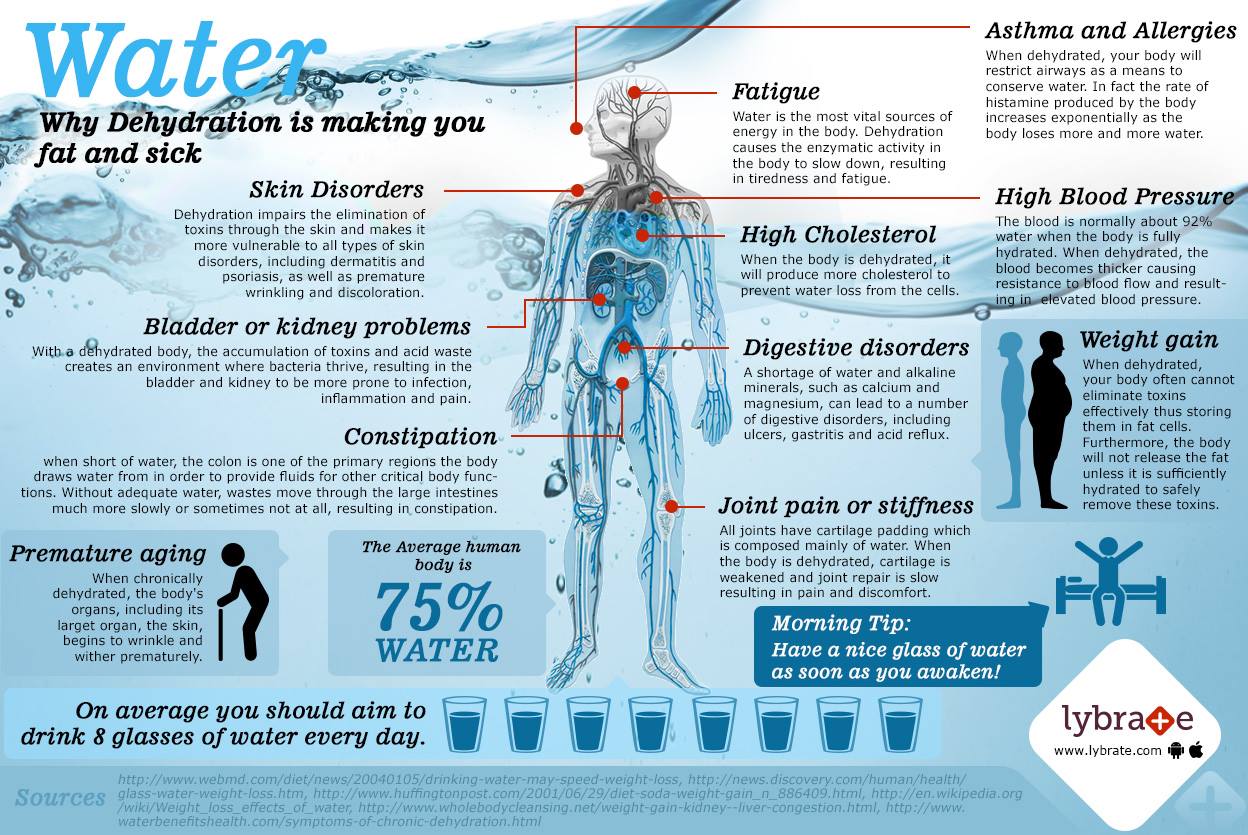

 People with conditions that affect the thyroid gland may therefore experience water retention.
People with conditions that affect the thyroid gland may therefore experience water retention. A person may experience bloating and breast tenderness as a result.
A person may experience bloating and breast tenderness as a result.

